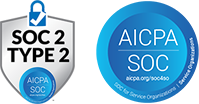What Is Accessibility in People Analytics?
Accessibility in People Analytics by SplashBI means measuring, monitoring, and improving how workplaces and digital platforms support employees with disabilities through unified data and dashboards. It ingests data from human resources information systems, facility management tools, and engagement surveys to pinpoint barriers and track accommodations over time.
Why Accessibility Matters in HR
Inclusive workplaces outperform peers on engagement and retention; SplashBI’s Diversity & Inclusion analytics confirm that accessible environments boost morale and productivity. Without tracking accommodation requests and workspace usability, organizations risk ADA non-compliance and lose valuable talent to inaccessible settings.
Where Accessibility Is Used
- Physical Facilities: Analyze ramp and restroom accessibility scores alongside utilization data to prioritize upgrades.
- Digital Platforms: Monitor WCAG compliance for intranets and learning portals using built-in dashboards.
- Employee Experience: Link survey feedback on assistive-technology effectiveness to engagement metrics for targeted training.
Accessibility Key Benefits
- Compliance Assurance: Automate tracking of ADA and WCAG standards, reducing litigation risk.
- Enhanced Engagement: Correlate accessibility improvements with higher engagement and lower turnover.
- Operational Efficiency: Automate accommodation workflows and reporting with pre-built Analytics.
- Data-Driven Decisions: Prioritize facility and platform investments based on real-world usage and feedback.
- Scalable Security: Leverage role-based security to protect sensitive accommodation data while enabling self-service insights.
Accessibility Best Practices & Examples
- Universal Design: Embed captioning, alt text, and keyboard navigation in HR portals and training modules by default.
- Automated Audits + User Testing: Combine WCAG-focused tools with employee feedback to validate accessibility.
- Predictive Alerts: Forecast spikes in accommodation requests—such as seasonal health trends—and allocate resources proactively.
- Integration Excellence: Connect UKG and Oracle HCM to capture end-to-end accommodation workflows in SplashBI dashboards.
- Manager Dashboards: Provide leaders with real-time visibility into key accessibility metrics and thresholds for early intervention.
Conclusion
Embedding accessibility metrics into People Analytics transforms compliance into strategic advantage. SplashBI’s unified platform equips HR teams with the data and insights needed to remove barriers, support employees with disabilities, and demonstrate measurable ROI on diversity and inclusion initiatives—creating workplaces where every individual can thrive.
Accessibility FAQs
Q: Which guidelines govern digital accessibility?
The Web Content Accessibility Guidelines (WCAG) versions 2.0, 2.1, and 2.2 by the World Wide Web Consortium define criteria—Perceivable, Operable, Understandable, Robust (POUR)—for inclusive web content.
Q: Who qualifies for accommodations?
Under the Americans With Disabilities Act (ADA), individuals with physical, sensory, cognitive, or mental impairments that substantially limit major life activities are entitled to reasonable workplace accommodations.
Q: How to audit physical spaces?
Use the ADA Accessibility Guidelines to inspect ramps, door widths, signage, and restrooms; combine with employee feedback for practical barrier identification and prioritization.



